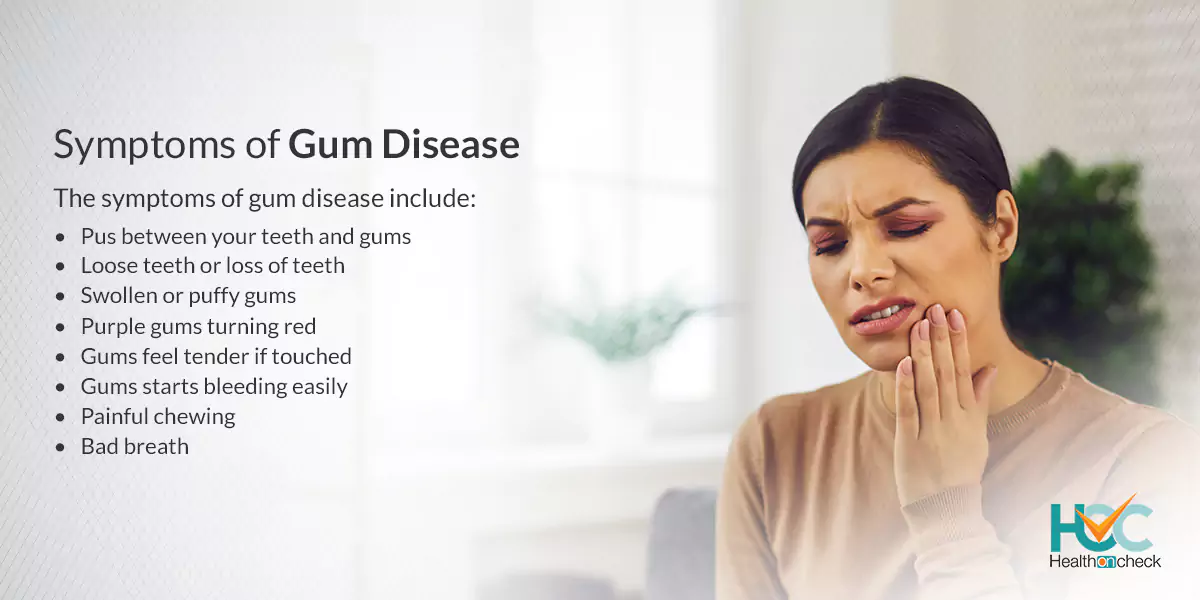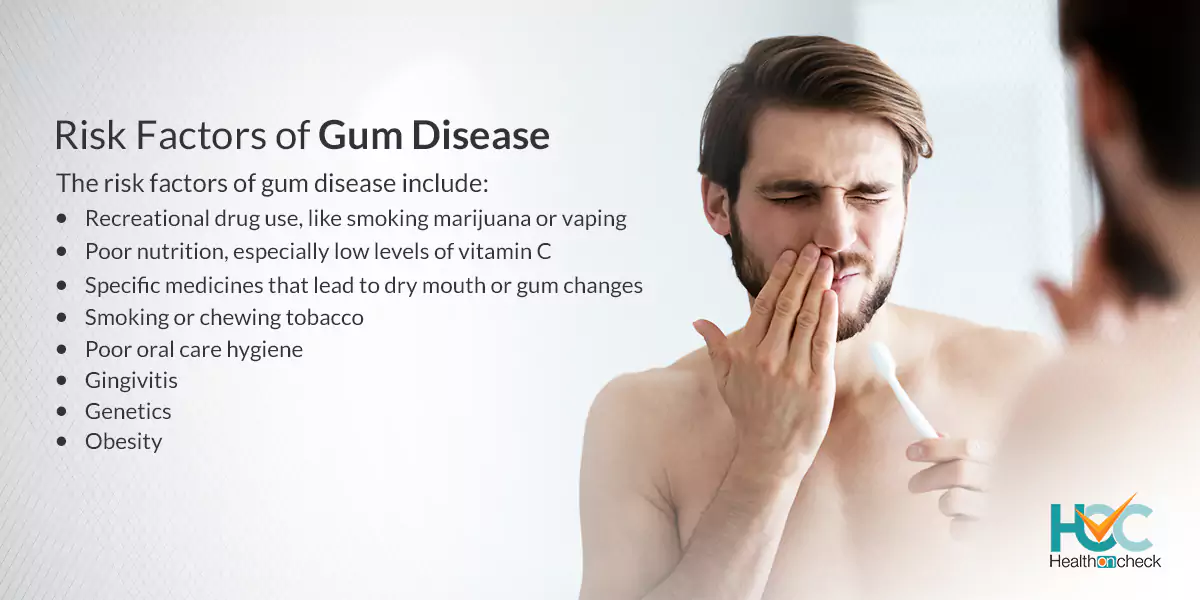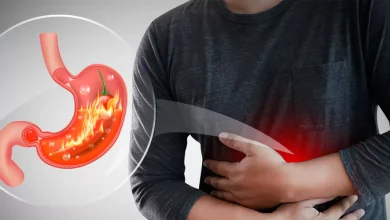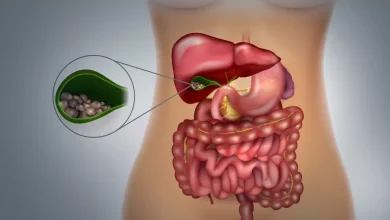What is Gum Disease?
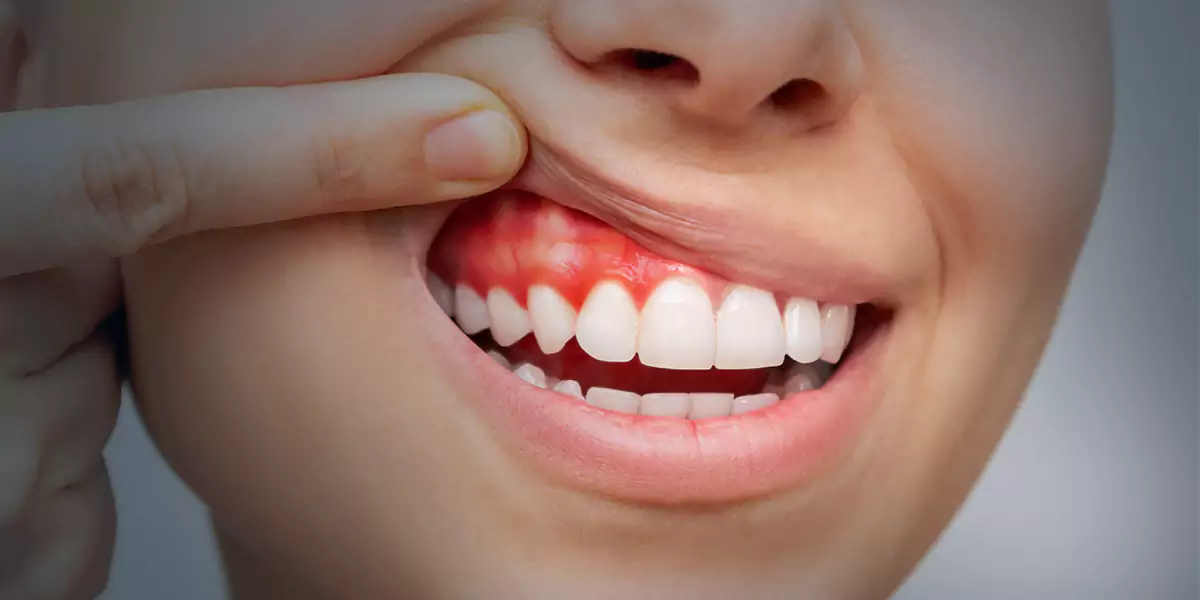
Gum disease also called periodontitis, is a severe gum infection that harms the soft tissue near teeth. If left untreated it may damage the bone supporting your teeth. It can lead to loosening of teeth or cause tooth loss. It also causes inflammation and infection of your gums and the bone supporting your teeth. Poor hygiene is the main cause of it but some people are more prone to this type of infection than others. Bad breath, loose teeth, and bleeding, swollen gums are the general symptoms of gum disease. Gum disease is common but can be normally prevented. People mostly develop gum disease because of not taking proper care of their mouth and teeth. To prevent gum disease and improve the chance of successful treatment, you need to brush at least twice a day, floss regularly, and go for regular dental checkups.
What are the Types of Gum Disease?
There are stages of gum disease instead of types.
There are four stages of gum disease including:
– Gingivitis
It is the earliest stage of gum disease that begins with red, puffy gums that might bleed while brushing or flossing. In this stage, there’s no bone loss and because of it, gingivitis is fully reversible with proper treatment.
– Mild periodontitis
In this stage, bacteria enter beneath your gums and affect the supporting bone. Here the gums might pull away from your teeth, resulting in pockets around them. Plaque and bacteria usually hide in these pockets, where it’s not possible for toothbrushes and floss to reach.
– Moderate periodontitis
If not treated, bacteria start to damage the ligaments, soft tissues, and bones holding your teeth in place. There might be bad breath and pus (infection) around your gum line. Some people also develop pain at this stage.
– Advanced periodontitis
As gum disease worsens, bone loss continues and makes your teeth loose which eventually fall out.
If treated earlier, gum disease is reversible. But if you’ve already lost bone around your teeth because of infection, the disease becomes too advanced to reverse. However, you can manage it with proper treatment and consistent, diligent oral hygiene
What are the Symptoms of Gum Disease?
The symptoms of gum disease include:
– Swollen or puffy gums.
– Purple gums turning red.
– Gums feel tender if touched.
– Gums starts bleeding easily.
– Your toothbrush might look pink after brushing your teeth.
– Blood comes out after brushing or flossing your teeth.
– Bad breath.
– Pus between your teeth and gums.
– Loose teeth or loss of teeth.
– Painful chewing.
– New spaces develop between your teeth that look like black triangles.
– Gums pulling away from your teeth, which makes your teeth look longer than normal, known as receding gums.
What are the Causes of Gum Disease?
In most cases, the development of gum disease begins with plaque. Plaque is a sticky film usually made up of bacteria. If left untreated, the plaque can develop into gum disease. Plaque contains several types of bacteria that can probably infect your gums. People with poor oral hygiene are more likely to get gum disease. In a few people, genes play an important role in the development of gum disease by changing the way their immune system responds to bacteria.
What are the Risk Factors of Gum Disease?
The risk factors of gum disease include:
– Gingivitis.
– Poor oral care hygiene.
– Smoking or chewing tobacco.
– Hormonal changes, like those connected to menopause or pregnancy.
– Recreational drug use, like smoking marijuana or vaping.
– Obesity.
– Poor nutrition, especially low levels of vitamin C.
– Genetics.
– Specific medicines that lead to dry mouth or gum changes.
– Diseases that lower immunity, like leukemia, HIV/AIDS, and cancer treatment.
– Certain diseases, including rheumatoid arthritis, diabetes, and Crohn’s disease.
What are the Complications of Gum Disease?
The main complication of gum disease is tooth loss. The bacteria responsible for gum disease might enter your bloodstream by passing through gum tissue and are likely to affect other parts of your body too. For instance, gum disease is connected with respiratory disease, coronary artery disease, rheumatoid arthritis, preterm birth and low birth weight, and complications in controlling blood sugar in diabetes. Research has shown that gum disease directly affects your overall health and well-being. There is also a link between gum disease and other health issues such as diabetes, heart disease, and stroke.
How Gum Disease is Diagnosed?
To find out the severity of you have gum disease, your dentist might:
– Examine your medical history to find out the factors that might be connected with your symptoms. Smoking or taking certain medicines that cause dry mouth are a few examples of it.
– Check your mouth to look for plaque and tartar buildup and examine for easy bleeding.
– Examine how deep the pockets are between your gums and teeth by placing a small ruler known as a dental probe between your teeth and gum line. Pockets are measured at many places in your upper and lower gums. In a healthy mouth, the pocket depth is normally between 1 and 3 millimeters (mm). Pockets deeper than 4 mm might be a sign of gum disease. It’s not possible to clean pockets deeper than 5 mm with routine care.
– Dental X-rays are taken to detect bone loss in parts where your dentist notices deeper pockets.
– A stage and a grade might be assigned to your gum disease depending on how severe the disease is, how complex the treatment will be, the risk factors along with your health condition, and after that, the treatment plan is created.
What are the Treatment Options Available for Gum Disease?
A dentist or a periodontist usually does the treatment. Treatment aims to clean the pockets around teeth thoroughly and avert any harm to neighbouring gum tissue and bone. If you have a daily routine of good oral care, manage health conditions that may impact dental health, and stop tobacco use then your chances of a successful treatment increase.
Nonsurgical treatments
If gum disease isn’t advanced, treatment might involve less presumptuous procedures, including:
– Scaling
Scaling gets rids of tartar and bacteria from your tooth surfaces and beneath your gumline. Instruments, a laser, or an ultrasonic device are used for this procedure.
– Root planing
It’s done to root surfaces. It aids in stopping the further accumulation of tartar and bacteria. It helps attach gum to your teeth again.
– Antibiotics
Topical or oral antibiotics are given to stop bacterial infection. Topical antibiotics might include antibiotic mouth rinses or putting gel containing an antibiotic into gum pockets. Sometimes oral antibiotics get rid of infections causing bacteria.
Surgical treatments
If you have advanced periodontitis, you might require dental surgery, including:
– Flap surgery, also known as pocket reduction surgery
Here your dentist will make cuts in your gums by carefully attaching them back to the tissue. It helps the tooth roots to make scaling and root planing more effective. Because gum disease usually causes bone loss, the underlying bone might be reshaped before stitching the gum tissue back in place.
– Soft tissue grafts
Your gumline usually gets lower, exposing some of your tooth roots after losing your gum tissue. You may need to have a few of the damaged tissue reinforced and it is normally carried out by removing a tiny amount of tissue from the roof of your mouth or through using tissue from another donor source and fixing it to the affected site. It helps to lessen further gum loss, covering exposed roots and providing your teeth with a better appearance.
– Bone grafting
It is done when your dentist destroys the bone near your tooth root. The bone graft is usually created from small bits of your bone, or made of artificial material or donated. The bone graft is helpful to avert tooth loss as it holds your tooth in place. It also works as a platform for the regrowth of natural bone.
– Guided tissue regeneration
It helps in the regrowth of bone that was destroyed because of bacterial infection. Here your dentist attaches a special type of fabric between the existing bone and your tooth. The material stops unwanted tissue from growing into the healing area, permitting bone to grow back instead.
– Tissue-stimulating proteins
Here a special gel is applied to a diseased tooth root. This gel contains the same proteins found in developing tooth enamel which speed up the growth of healthy bone and tissue.
Living with Gum Disease
In the earlier stages, gum disease is usually painless and it’s vital to be aware of warning signs so you can get proper treatment before the disease gets worse. If not treated, gum disease can adversely affect your oral and overall health. The infection might spread to other parts of your mouth and body, increasing your risk for many health conditions, such as heart disease, stroke, and diabetes.
Whom to Consult?
You should always keep oral hygiene, make an appointment with your dentist and get a dental checkup every few months. If you notice any symptoms of gum disease, consult with your dentist as soon as possible. The earlier you get treatment, the better your chances of reversing damage from gum disease.

